#Paolo Poli
Explore tagged Tumblr posts
Text
Osceno è tutto quello che lo fa diventare duro ai moralisti.
Paolo Poli
54 notes
·
View notes
Text
25 marzo … ricordiamo …
25 marzo … ricordiamo … #semprevivineiricordi #nomidaricordare #personaggiimportanti #perfettamentechic
2022: Kathryn Hays, Kay Piper, modella e attrice statunitense. È stata sposata tre volte: con Sidney Steinberg, dal quale ebbe una figlia Shari Hays Wells, anch’essa attrice, con Glenn Ford e con Wolf Lieshke, impiegato nell’industria pubblicitaria. (n. 1933) 2020: Floyd Cardoz, è stato un cuoco, imprenditore e personaggio televisivo indiano naturalizzato statunitense. (n. 1960) 2020: Mark Blum,…

View On WordPress
#25 marzo#Angela Bucci#Angela Goodwin#Anna Myrtle Smoyer#Claude Debussy#Concettina Di Lorenzo#Daniel Massey#Floyd Cardoz#Frank Buck#Giovan Battista Marino#Inna Makarova#Inna Vladimirovna Makarova#Ivo Garrani#Jack Hulbert#John Norman Hulbert#Kathryn Hays#Kay Piper#Leslie Fenton#Lynn Merrick#Mark Blum#Martha Sleeper#Marylin Llewelling#Morti oggi#Nancy Walker#Paolo Poli#Riccardo Fellini#Ricordiamo#Tina Di Lorenzo
0 notes
Text










TEATRO - PAOLO POLI - Leggenda di San Gregorio
1 note
·
View note
Text
The Hub
Why make this blog? To give us ToA fans easier access to fics that are strictly based on The Trials of Apollo!
The ToA Ao3 tag isn’t as bad as it once was, but it’s still incredibly frustrating to shuffle through fics that have nothing to do with our favorite books, so this is what this blog is for!
Who made this blog? Hi, I’m @firealder2005, though you may also know me as @apollosgiftofprophecy or Alder!
How are you doing this? With lots and lots of painstaking time. I work on this in my spare time between college, family, extracurriculars, and other hobbies of mine.
What will I find here? Anything ToA!
What qualifies as ToA? A few things;
Takes place during ToA/is directly influenced by ToA (ie, deals with aftermath of ToA)
Apollo-focused/plays a main part
Focuses on ToA-centric characters (ie, Meg or Lavinia)
Expands on past characters (ie, Reyna, Jason) and their lives due to ToA
What about minor ToA characters? They count too! Chiara, Damien, Valentina, Paolo, ect are all included, and more!
What does “anything” mean? Anything. Meaning, there may be ships you don’t like, but still qualify as ToA, so make sure your filter is on so you can enjoy your scroll! Everything is tagged appropriately.
What about fics that aren’t ToA-friendly? I will be skipping those. In my own personal perusal of the tag, I have come across some fics that are rather unflattering to our series, so I will not be adding them here.
What fics are those? This includes fics that make Apollo homophobic (wtf), ignores the characters’ development, has tags that is negative towards ToA, or denies ToA’s existence entirely. I am using my own judgment on this matter, so if you feel I have made a mistake, shoot me an ask!
What about crossovers? I have crossovers tagged accordingly!
How did you tag? I’ll have a guide below the cut!
Any Questions? Send them in!
Did I miss a fic? Send an ask and advocate for its addition to the masses! (Will not be taking any at the moment, since I’m still putting it all together)
Just come here to hate? Will not be entertaining.
Tags
Searching by Character
Type in a character’s name (ie, #leo valdez, #pjo ares)
Searching by (Relation)Ship
Type in ship name (ie, #pipabeth) OR a relationship tag (ie, #sunflower siblings, #triumvirate holdings)
Poly ships are tagged with #polyamory and #poly ship
If you have an idea for a ship/relationship tag, let me know and I will do my best to accommodate it!
Searching by Rating
Type in rating (ie, #gen, #teen, #mature, #explicit)
Searching by Book
Type in book name (ie, #the burning maze, #the tower of nero)
Crossovers
Type in #crossover to see the full selection.
Type in fandom-specific tag for a specific fandom (ie, #supernatural, #marvel)
Will update as needed. All fics are posted with their fic descriptions and ratings. Filter preferences accordingly.
#the trials of apollo#trials of apollo#percy jackon and the olympians#the heroes of olympus#heroes of olympus#pinned post#pjo apollo#toa apollo#meg mccaffrey#sunflower siblings#lester papadopoulos#toa#copollo#hyapollo#leo valdez#pjo calypso#nico di angelo#will solace#reyna avila ramirez arellano#lavinia asimov#pjo artemis#pjo ares#pjo hephaestus#pjo aphrodite#pjo hermes#pjo dionysus#pjo hera#pjo demeter#pjo zeus#pjo hestia
87 notes
·
View notes
Text

Il sesso è nel cervello, non è tra le gambe.
Paolo Poli
✓
30 notes
·
View notes
Text

MORE?! Yep!
Download All - SFS / MF Pick & Choose - SFS / MF
credit: clumsyalien, johnnysims, kiarazurk, okruee, sforzinda, simduction, simomo, daylifesims
details under the cut
Simduction's Twiggy | UF | 7.164 poly Sforzinda's Navillera Braid | CU-EU | 2.858 poly Kiarazurk's Thomas | UM | 6.866 poly Johnnysims' Paolo | TM-EM | 4.395 poly Kiarazurk's Edward | CM-EM | 7.270 poly Daylifesims' Larsa V3 | TF-AF | +2 custom | 10.602 poly Daylifesims' Larsa V2 | TF-AF | +9 custom | 13.339 poly Okruee's Ambrose V1 | UU | 10.518 poly Okruee's Ambrose V2 | UU | 15.228 poly Simomo's Jasmin | UF | 19.934 poly Clumsyalien's Caleb | UM | 6.950 poly Daylifesims' Larsa V1 | TF-AF | +9 custom | 15.556 poly Okruee's Heartstrings | UF | 10.630 poly Okruee's Heartstrings w/ Headband | UF | 10.989 poly
#4t2#4t2cc#sims 2 cc#sims 2 hair#4t2 hair#sims 2 custom content#sims 2 download#ts2 hair#dl:h#dl:fh#dl:mh#download
585 notes
·
View notes
Text
i keep thinking about Drew Tanaka/Will Solace/Paolo Montes as a poly ship. three pretty best friends except theyre dating
#pjo#riordanverse#drew tanaka#will solace#paolo montes#i love the idea of drew and will being that flavor of best friend where they would 100% date each other they just choose not to#except for when they do. also theyre the best friends dynamic where they bitch about stuff together#drew bringing out will's secret huge bitch side is delightful to me#this ship concept dynamic to me is just like. three most popular kids in school who know theyre hot shit#Drew is the enabler in the group. Paolo is the voice of reason. Will is the one who makes everybody play nice.#Drew often wins out. she doesnt even use charmspeak or anything#Will and Paolo just keep going ''okay you have convinced us. We will be A Little Silly. As A Treat.''#Drew: I didnt even say anything || Will and Paolo: And say no more. we have been convinced.
65 notes
·
View notes
Text
SHORT INTRO
about me!
paolo, he/him, 23, i’m very silly 😋😋, italian, moved to bulgaria for the funnies, likes the color green
what do i do?
i like jojos and robocar poli 🥰🥰 so i’ll probably post a lot abt those… also expect random ahh posts bc my coworkers are insane 💀😣😣
socials
SIKE!! i’m not sharing my socials… except for my discord its masseratti_bucciarati
i’m pretty new to tumblr so im still getting used to the layout… anyways i might update this but for the mean time enjoy my blog
17 notes
·
View notes
Note
Poli primeiramente queria dizer que amo sua arte sério, seu estilo é muito lindo ❤️
E também eu queria perguntar como vc faz pra os seus desenhos serem tão fluídos? Tipo as poses são muito suaves e expressivas, essa é uma das coisas que eu mais gosto nos seus desenhos, a fluidez.
Vc tem alguma dica ou estudo de como fazer desenhos assim? Qualquer coisa já ajuda. Vlw 🤠
AAA OBRIGADA!! Sinceramente fico muito feliz que fluidez é o que tenha chamado sua atenção nos meus desenhos. É algo que eu venho tentando melhorar a algum tempo no meu traço e ainda tem muito espaço pra evolução! Acho que quando se trata de fluidez o primordial é saber construir uma linha de ação clara pros personagens, ainda mais se tratando de cartuns. Dessa forma você consegue amplificar o propósito de uma ação e deixar ela mil vezes mais interessante!

Além disso o que tem me ajudado muito é buscar referências dos quadrinhos do Topolino (as revistas italianas da Disney) porque acho a estilização deles especialmente LINDA. Além disso eu salvo alguns quadrinhos de edições publicadas no Brasil (principalmente pra refs do Zé) e qualquer edição em que apareça o Panchito.
Sério acho que a melhor maneira é estudar os profissionais, eu recentemente comecei a seguir esses caras aqui ó! Paolo de Lorenzi Paco Rodriguez Stefano Zanchi



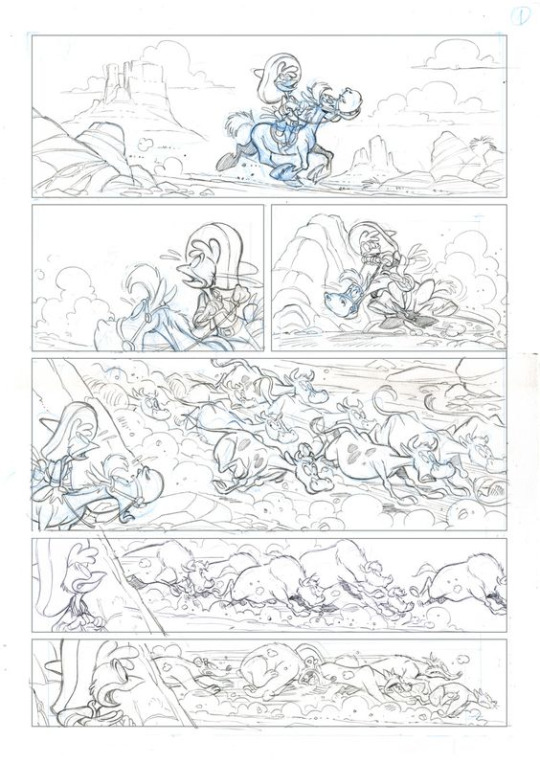
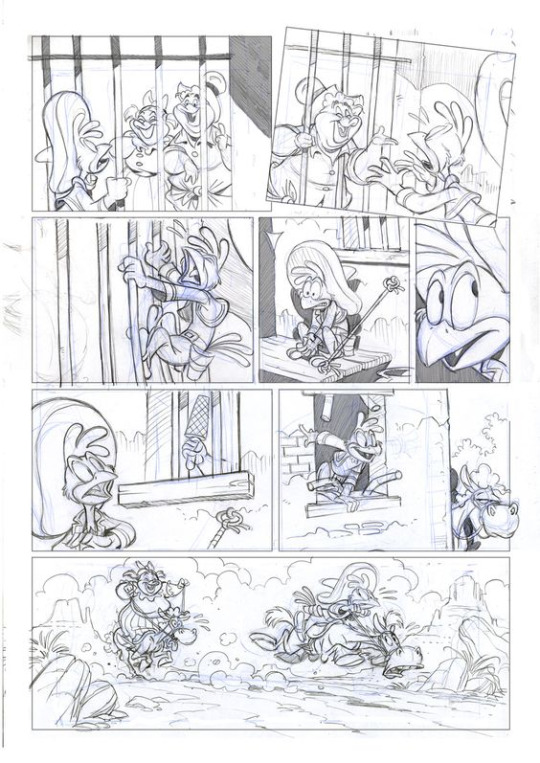



69 notes
·
View notes
Text
"Non c'entrarà tutto. Disse Cleopatra sedendosi sull'obelisco."
Cit. Paolo Poli.
2 notes
·
View notes
Text
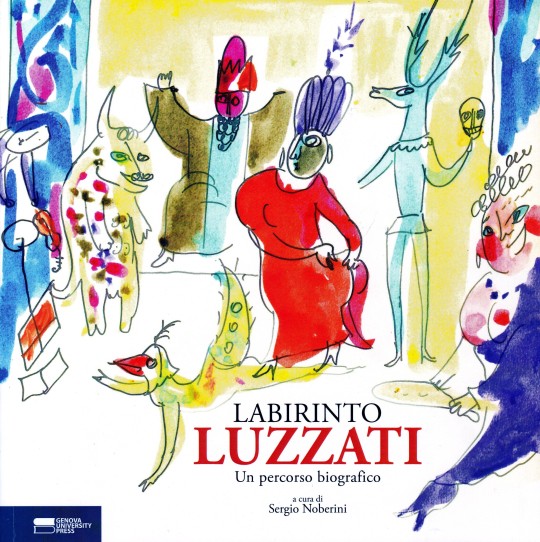

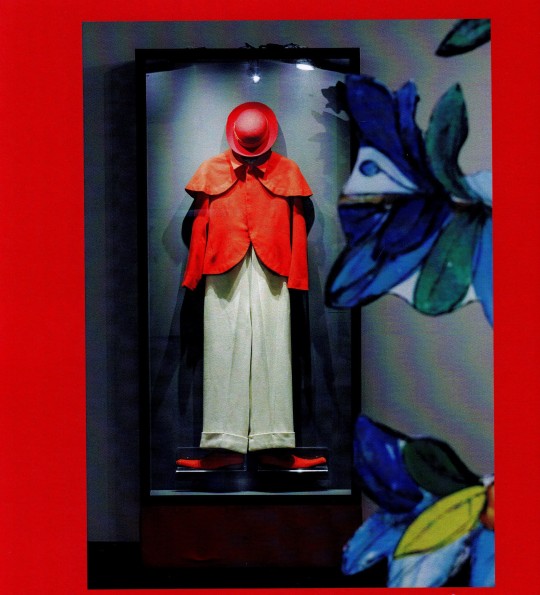
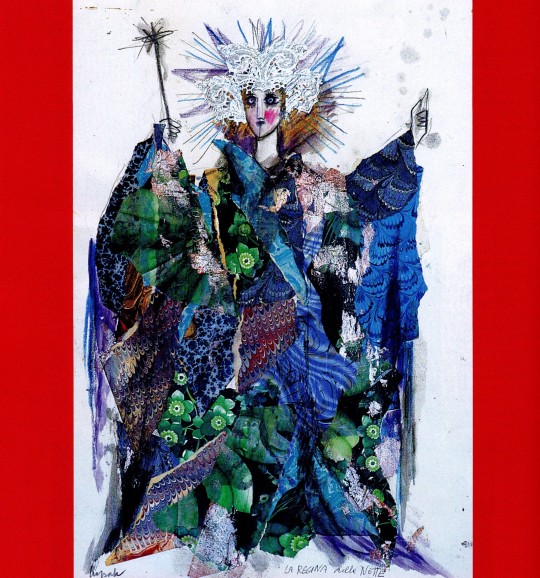
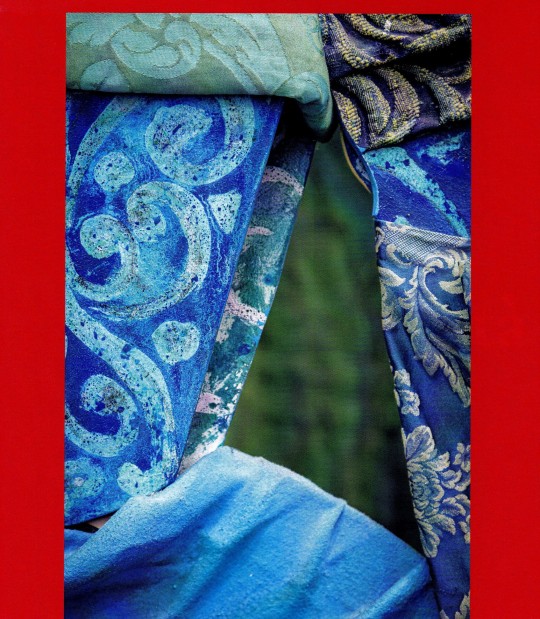


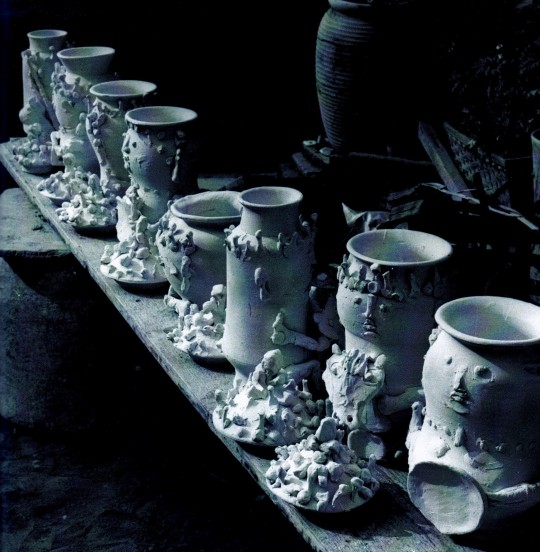



Labirinto Luzzati
Un percorso biografico
a cura di Sergio Noberini
Genova University Press, Genova 2022, 79 pagine, 21x21cm, ISBN 978-88-3618-117-9
euro 22,00
email if you want to buy : [email protected]
Il volume è la testimonianza della mostra omonima voluta dal Comune di Genova nel 2019 per ricordare Emanuele Luzzati a dieci anni dalla sua scomparsa. Il testo vuole documentare i criteri e i materiali dell’allestimento espositivo per sezioni corredate di testi e testimonianze. Luzzati, insieme a Paolo Poli, Aldo Trionfo, Alessandro Fersen e altri, è stato uno dei protagonisti della cultura del ’900, operando nel mondo del teatro, dell’illustrazione e del cinema d’animazione. La mostra è nata come traccia per un ciclo di esposizioni tematiche con approfondimenti e ulteriori materiali originali. La pubblicazione costituisce il primo appuntamento per documentare le numerose discipline ed esperienze artistiche di Emanuele Luzzati. Le cinque sezioni ripercorrono la carriera di Luzzati dalla formazione presso l’École des Beaux Arts di Losanne e le prime opere realizzate con la tecnica dell’incisione, per continuare con l’esperienza teatrale e la lunga attività nel campo dell’illustrazione e concludendo con la produzione ceramica, gli arredi urbani e navali e il cinema d’animazione.
26/07/23
orders to: [email protected]
ordini a: [email protected]
twitter:@fashionbooksmi
instagram: fashionbooksmilano
designbooksmilano
tumblr: fashionbooksmilano
designbooksmilanoillustration books
#Labirinto Luzzati#Emanuele Luzzati#teatro#illustrazione#cinema animazione#ceramiche#arredi urbani#Sergio Noberini#fashionbooksmilano
11 notes
·
View notes
Text










#acnh#animal crossing#city folk#fandom polls#new horizons#new leaf#wild world#paolo#Lulu#vic#juubei#Lopez#gala#dierdre#elvis#gabi
26 notes
·
View notes
Text
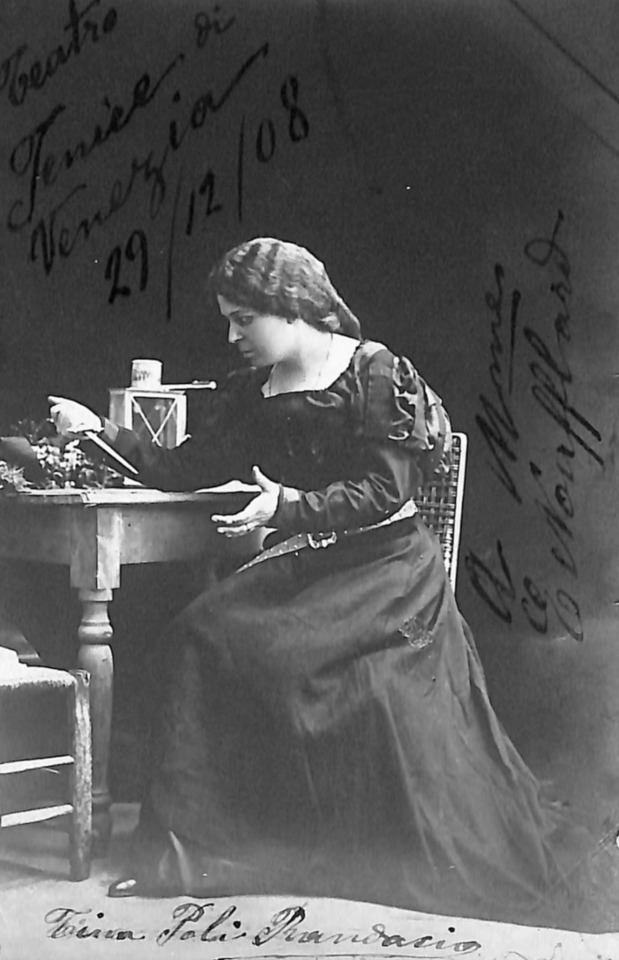
Ernestina Poli was born in Ferrara, Italy on 3 April 1879, and she studied for only a few years before making her debut at Bergamo in 1902 as Amelia in Un Ballo in Maschera. She had a huge success and was retained for another dozen performances in Il Trovatore and the then very popular Salvator Rosa. She ended the year at Massa. At this point, despite her success, she retreated from the stage for another year of training, after which she debuted at Messina in Andrea Chenier with the tenor Ruggero Randaccio. On 17 Jan, 1904 she sang Micaela for the only time in her career, again with Randaccio as her stage partner. It was not long before the couple announced that they were to be joined in life, and in the summer of 1904, shortly before a tour to South America, they were married. She immediately changed her stage name to Tina Poli Randaccio, and there are interesting and amusing confusions in some South American reviews during the tour of 1904, in which she is listed as the tenor, he the soprano. Poli was assumed to be his first name and Ruggera, hers.
The tour took the couple to Sao Paolo and Rio de Janeiro where Tina appeared as Mimi, the Trovatore Leonora, Desdemona, Aida, Maddalena di Coigny, Gioconda and Santuzza. He sang in Boheme, Andrea Chenier and Cavalleria Rusticana. The year ended at Sao Paolo with an opera called Cristo alla Festa di Purim, after which she added La Forza del Destino, Ballo in Maschera and Ernani to her assignments in Brazil. The couple traveled with the company to Manaus and Pernambuco, then returned to Europe where Ruggero announced his retirement from the stage. They decided that he would be her manager and coach, and from about this point his name was never seen on a billboard again.
On 2 December 1904 Tina debuted at Milan's Teatro Dal Verme in an opera called Jana with Bergamasco and Schiavazzi conducted by Serafin and from there she went to Oporto where she sang in Aida, Il Trovatore, Don Carlo, Pagliacci, Un Ballo in Maschera and Cavalleria Rusticana. After a short respite, the couple sailed for Mexico, and in September 1905 Tina appeared at the capitol in Les Huguenots (in Italian), Aida, Germania, Un Ballo in Maschera and Giordano's recently produced opera Siberia. The company included Virginia Guerrini, Alice Zeppilli, De Marchi and Magini Coletti, and it is not surprising, given those names, that the tour extended for four months and included visits to Guadalajara.
Turin welcomed her back to Italy when she appeared at the Teatro Vittorio Emanuele as Gioconda in January of 1907. A tour to Bucharest was arranged by Randaccio and on 11 November Tina debuted as Aida in a cast that included De Angelo, Angioletti and Bellat. On the 18th, she sang in Ernani with Angioletti, Titta Ruffo and Torres de Luna. Her season continued into the middle of December with Un Ballo in Maschera and Il Trovatore, both with Ruffo, Les Huguenots, and La Gioconda. A visit was made to Kiev and Odessa, but I have no record of her roles.
Tina debuted at Parma's Teatro Regio on 6 January 1908 in Mascagni's brand new opera, Amica and after singing in Red Roses and Damnation of Faust, she undertook a four month tour of Italy with the new work, under Mascagni's direction. The cities visited included, Firenze, Bologna, Modena, Verona, Treviso, Trieste, Ravenna, Ancona, Cesena and Forli, where she received a thunderous welcome and was hailed as the greatest soprano seen there in a generation. At Livorno she sang in the composer's Le Maschere and Iris and the tour ended at Rome's Teatro Adriano, where Tina sang eleven performances of Amica and several of Le Maschere, the latter with Juanita Caracciolo and Carlo Galeffi.
On 26 December, Tina made a much heralded debut at Venice's Teatro la Fenice as Aida with Ladislava Hotkowska and Henderson. The revival was so well received that a scheduled three performances became six. At Fiume, in April, she sang in Ernani and La Gioconda and in October she returned to the Adriano for Tosca, Aida and the world premiere of Raffaelo,by De Lunghi.
In February 1910 Tina debuted at Madrid's Teatro Real as Gioconda in a cast that included Flora Perini, Giuseppe Taccani and Ruffo, after which she sang ten performances of Aida and six of Loreley at Catania's Masimo Bellini. The spring found the Randaccios back in Brazil, where, at Rio de Janeiro, on 27 May, Tina sang Isolde for the only time in her career, though it was a moderate, if not overwhelming success. At Rio, she also sang in Il Trovatore, La Gioconda, Loreley, Tosca, Aida, and Germania, and at Sao Paolo, she added another new work, Boscaiuola. Tina's tour partners included Anna Gramegna, Krismer, Giraldoni and Viglione-Borghese, and, as had been the case in Mexico, this starry roster resulted in an extended season both in Rio and in Sao Paolo.
The most important moment of her career had arrived. On 17 December 1910 Tina debuted at La Scala as the Siegfried Brunnhilde, with the inimitable Giuseppe Borgatti in the title role. There were a dozen performances, and the production was a complete success. Fanny Anitua was an unforgettable Erda according to contemporary reviews, and the hero and heroine received memorable ovations every evening. Though hers would not be a major career in the most important of all Italian theaters, it continued at intervals for a good number of years, and included several world premiers.
In February 1911 Tina returned to Parma for La Gioconda and then took a well needed break from performing. During the summer, she learned the role of Minnie in La Fanciulla del West, and on 10 September, at Puccini's invitation, she sang the first of thirteen performances at Lucca's Teatro del Giglio with Taccani as Dick Johnson. Her success was enormous, in fact, greater than her predecessor, Eugenia Burzio, who had sung in the Italian premiere earlier in the season. Poli was immediately engaged to repeat the opera at Naples' San Carlo with Martinelli and Viglione-Borghese and at Bari's Teatro Petruzzelli with Corti and Mariano Stabile. After a debut at Palermo's Massimo as Gioconda in March 1912, she sang Minnie at Monte Carlo, again with Martinelli and Viglione-Borghese, and in late May she debuted at the Paris Opera as Minnie in a gala performance with Enrico Caruso.
In November, Tina sang in La Gioconda at Genoa and then prepared for the Scala premiere of Fanciulla. There were many sopranos who had vied for the honor, whose partisans had lobbied intensely for them, and the uncertainty had been a major story in Italian newspapers. Burzio reigned at Scala, but it was not to be. Tina's reputation as Minnie was by now so secure that both Scala's management and the composer agreed that she deserved the honor. On 29 December, before a star studded audience, the Milan theater presented La Fanciulla del West for the first time with Poli Randaccio, Martinelli and Galeffi. Tullio Serafin was on the podium, and the clamor was so enormous that the opera was repeated fourteen times.
Tina repeated Minnie at Monte Carlo in February 1913 with Martinelli and George Baklanov, after which she sang the role at the site of its Italian premiere, the Costanzi of Rome. In the spring there were concerts at Modena in honor of the centenary of Verdi's birth and on 15 December, Tina sang in the world premiere of Mascagni's Parisina at La Scala under the composer's baton. The cast included Luisa Garibaldi, Hipolito Lazaro and Galeffi, and there were twelve performances.
On 10 February 1914 Poli sang in the world premiere of Smareglia's Abisso and on 2 April in the world premiere of Alfano's Ombra di Don Giovanni, both at La Scala. In May she sang in Tosca at Milan's Teatro Carcano with Garbin and Viglione-Borghese and in October Tina participated in one of this century's most important stage debuts, that of Beniamino Gigli as Enzo, at Rovigo, on 15 October. It was the scene of veritable riots; a star had truly been born, and there were thirteen performances. Tina's year ended with Un Ballo in Maschera at Piacenza, a revival shared with the equally celebrated Celestina Boninsegna.
Rome's Costanzi welcomed Tina back as Gioconda, Tosca and Minnie in the winter of 1915, and after Gioconda at Naples and Aida at Firenze, she sailed for South America and her debut at the Teatro Colon of Buenos Aires. On 25 May, Poli debuted as Gioconda in a cast that included Perini, Lazaro, and Riccardo Stracciari. La Prensa referred to her as "a major talent whose voice can send shivers down one's spine, so present and immediate is the reaction". On 6 June she sang Santuzza and on the 17th, she sang in a concert with Caruso, Bernardo de Muro, Mario Sammarco and Lazaro. The season ended with Tosca and had included performances with the company at Cordoba and Rosario, where she sang Tosca and Santuzza, and at Tucuman, where she sang Santuzza.
Tina traveled from Argentina to Santiago, Chile, and on 27 August, she opened the season at the Teatro Municipal in La Fanciulla del West. The work was so well received that an additional performance was added; it was the only opera to be seen as many as four times. She stayed at Santiago for two months, singing Tosca, Aida, Gioconda, Santuzza, the Trovatore Leonora and Maddalena di Coigny and appeared as Aida, Tosca, Gioconda and the Trovatore Leonora at Valparaiso. Tina returned to Buenos Aires in late October where, at the Teatro Coliseo, she sang all of her Chilean roles except for Maddalena, and after a brief rest, she undertook a long tour of the Caribbean Basin. World War I was in its most intense period and the safety of the Western Hemisphere certainly seemed more attractive than the dangers of Europe.
On 29 January 1916 Tina debuted at Havana as Aida, and later sang in Tosca, Il Trovatore, Cavalleria Rusticana, Iris, La Gioconda, Les Huguenots, and La Fanciulla del West. Her tenor partners were Lazaro and Zinoviev; Enrico Roggio carried most of the baritone weight and Amelita Galli-Curci appeared with Poli in Les Huguenots (in Italian). The company stayed at the Cuban capitol for nearly two months, then toured to Cienfuegos, Camaguey, Santiago de Cuba, Mananzas and in the late spring, to Costa Rica.
In November Tina returned to Italy for Tosca at Bologna with Aureliano Pertile and Jose Segura-Tallien and in January 1917 she sang at Milan's Dal Verme in a gala concert, including act 3 of Aida and act 4 of La Gioconda. At La Spezia she sang Aida, and in June Tina debuted at Zurich as Tosca with Gubellini and Sammarco. After singing Santuzza at the Swiss theater, she returned to the Dal Verme for Aida and at Genoa, she sang in La Gioconda with Vita Ferluga, Folco-Bottaro and Galeffi.
Tina decided that the climate in Europe was not what the doctor ordered, and in fact, work was difficult to find for nearly everyone in 1917. Many of Italy's most important theaters were closed, and those that remained open presented very shortened seasons. Havana again beckoned and Tina returned in December for Aida, La Fanciulla del West, Les Huguenots, Tosca, La Gioconda, L'Africaine, La Boheme and a new opera, Doreya. Her colleagues included the tenor, Jose Palet, Edith Mason, Maria Barrientos and the basses, Nicoletti-Korman and Virgilio Lazzari. The tour again included Camaguey, Cienfuegos and Santiago. In mid March 1918, the company moved to San Juan and Ponce for a two month season in Puerto Rico. Poli sang the same roles and added Amelia in Un Ballo in Maschera. In June, at Caracas, Venezuela she sang in Aida, Tosca, Les Huguenots, La Gioconda and Cavalleria Rusticana.
The Great War was over and Tina returned to the safety of a victorious Italy for La Gioconda at Bologna, Milan's Teatro Lirico and Firenze's La Pergola. On 18 December she reappeared in glory for the first of eleven performances of Aida at La Scala. The next few months were spent at Turin with Cavalleria Rusticana and Aida. It was during the revival of Aida that Tancredi Pasero made his absolute opera debut as Il Re, substituting for an indisposed colleague. It is with some pride that the author acknowledges this event, since Pasero's debut has always been listed as at Vicenza in La Sonnambula much later in the year. And with pleasure, I also acknowledge that this information was kindly provided by Robert Tuggle of the Metropolitan Opera Archives.
After La Fanciulla del West at Trieste's Teatro Rossetti, in late November, Tina debuted as Aida at Barcelona's Liceo and in December she completed her engagement as Gioconda. In January 1920 Tina sang thirteen performances of Aida at Trieste's Teatro Verdi with the stellar cast of Giuseppina Zinetti, Miguel Fleta and Carmelo Maugeri. Rome's Costanzi welcomed Poli back with seven performances of La Gioconda and Genoa saw her as Santuzza in March. May was spent at the Fenice of Venice, where Tina sang in Suor Angelica with Elvira Casazza and in Aida. In June, she traveled to London for a debut at Covent Garden in Tosca with Fernand Ansseau and Dinh Ghilly and was very poorly received by both public and press who recoiled from her strong vibrato and melodramatic impersonations. Tina left London after one performance, never to return.
However, on 31 July she was welcomed with an enormous ovation at the Verona Arena when she sang in Aida with Zinetti and Pertile. After La Gioconda at Turin's Teatro Chiarella, Tina returned for a very long season at Barcelona, appearing in Aida, La Gioconda, Un Ballo in Maschera, Lucrezia Borgia, Cavalleria Rusticana and Ernani, as well as in act two of Tosca during a gala benefit. Her reviews were nothing short of magnificent and in Gioconda, she was heralded by several critics as the greatest that the city had ever seen or heard. The Liceo and Tina Poli Randaccio would continue their love affair over several more seasons.
In 1921, Tina appeared at Brescia and Trieste for La Gioconda, Palermo for La Gioconda and La Fanciulla del West, Rome for Aida, the Milan Arena for La Gioconda, Vicenza for La Fanciulla del West with Ismaele Voltolini and Stabile, Venice for La Gioconda and at Parma on 29 December in a stellar revival of the Ponchielli work with Giannina Arangi Lombardi as Laura, Irene Minghini Cattaneo as La Cieca, Voltolini as Enzo, Noto as Barnaba and Bruno Carmassi as Alvise.
The new year found her in revivals of La Fanciulla del West at Naples, Milan's Carcano and at Turin where she was joined by Voltolini and Apollo Granforte. The Dal Verme hosted Tina in Il Trovatore with Zinetti, John O'Sullivan and Benvenuto Franci in October, and after eleven performances of Les Huguenots at Bologna with O'Sullivan, Poli returned to Barcelona for Aida with Aurora Buades and Lazaro, Tosca with Lazaro and Les Huguenots with Cassini and Lazaro.
Tina debuted at Cairo on 27 January 1923 as Gioconda and continued her season as Minnie and Santuzza, after which she repeated all three roles at Alexandria. Santuzza was the role of her return to Milan's Teatro Lirico in May and on 11 August she appeared at Venice's Lido di San Nicola in Aida with the riveting Gabriella Besanzoni. In November, Trieste saw Poli as Gioconda and on the 22nd, she sang in a gala performance of Aida at Rome's Costanzi in honor of the King and Queen of Spain. Zinetti, De Muro and Enrico Molinari completed the stellar cast and the conductor was Mascagni. Tina's year ended at Mantua with four performances of Tosca, after which she appeared at Brescia's Teatro Grande in Loreley. Neapolitan audiences appreciated her Trovatore Leonora and Romans admired her in L'Africaine with Pasini, Giulio Crimi, Molinari and Pasero and in Tosca with Crimi and Stracciari.
In the summer Tina debuted at Vienna as Aida with Maria Gay, Giovanni Zenatello and Viglione-Borghese, a revival that had to be repeated sixteeen times before moving to Kaiserdam, Germany in September. Berlin saw her Santuzza before she returned to Barcelona in November for another daunting season. This time Tina sang in Aida, Les Huguenots, L'Africaine and a new work, Suor Beatrice. Though Tina Poli Randaccio is primarily remembered in Italy as the quintessential Italian dramatic soprano, she had by now appeared in twenty countries, and with the singular exception of England, had been rapturously received in all. There would be a twenty first.
1925 began at Naples with L'Africaine and on 30 January, Tina returned to the Costanzi for La Fanciulla del West with Crimi and Parvis. After further performances of Tosca and Aida at the San Carlo in February, she returned to Rome for Il Trovatore and Aida. The Lido di San Nicola at Venice feted Tina to a serata di gala on 1 August as the prelude to an engagement as Aida at the Fenice, after which she sang in Tosca at Rimini with Pertile and Viglione-Borghese. In October, she returned to Genoa for La Gioconda, and on Christmas Night 1925, at Bari's Teatro Piccinni, she sang Norma for the first time. Though she sang six performances, it was not a great critical success, and she decided to drop plans for several other planned engagements in the role.
Trieste's Teatro Verdi hosted Tina in Abisso and Il Trovatore at the outset of 1926, after which she sang in La Fanciulla del West at Genoa's Carlo Felice, in Aida and a Benefit Concert at Rome's Costanzi, and in Il Trovatore at Naples' San Carlo, the last with Ebe Stignani. Poli had been singing for a quarter century and it had been an enormously intense and successful twenty five years, but Father Time, as he will, began to play his inevitable role. After Naples, it was not until September that Tina again appeared on a stage, when she debuted at the Athens Arena in Aida with Franco Battaglia. And so, her year ended.
La Scala beckoned one more time, and, on 9 March 1927, Tina sang in the world premiere of Guarino's Madame de Challant with Francesco Merli and Carlo Morelli, and with these three performances she said farewell to the theater that had presented her as its first Minnie, and in four world premieres.
Naples again welcomed Tina for Il Trovatore and Aida, and she debuted at Modena's Teatro Comunale in April as Gioconda, and, a week later she unveiled the role of Turandot at the Comunale. At Milan's Carcano she sang in Isabeau and at year's end she returned to Barcelona for the last time, appearing in Aida and La Gioconda, with identical casts, Zinetti, Aroldo Lindi, Granforte and Vela.
In February of 1928 Tina sang in Turandot at the San Carlo and in February, she bade farewell to Naples as Gioconda. In April she returned to Rome, where, at the newly named Teatro Reale, she sang for the last time, when she appeared in Il Trovatore. Her last engagement of 1928 was as Isabeau at Livorno in a revival conducted by Mascagni.
In 1929, Tina sang Gioconda and Santuzza at Milan's Lirico, Turandot at Nice, which is listed in the program as the French premiere of the Puccini opera, Aida at La Spezia and Tosca at Firenze's Teatro Verdi. In 1930, her only Italian engagements were at Genoa where she sang Isabeau, Aida, and Santuzza, after which she sailed to Caracas for a season as Gioconda, Tosca, Maddalena di Coigny, Santuzza and Elena in Mefistofele. There would be no further engagements outside of Italy, and few enough in her homeland though she continued to appear for another six years.
In 1931, she sang Santuzza at Bergamo, Gioconda for Italian Radio both at Rome and Turin, Gioconda in Palermo's Teatro Garibaldi, Nedda at Isola, and Aida at Biela and at Rome's Teatro Adriano. In 1932 she sang in Gioconda at Crema and in Tosca at Milan's Teatro Puccini and at Brescia. 1933 found her again at the Puccini for Isabeau, at the Adriano for Minnie and Aida, and at Milan's Politeama for Santuzza.
In 1934 she returned to Norma, which had played so minor a role in her career, and she sang it at both Monza and the Lido of Pesaro. At Pesaro she also sang Santuzza, a role repeated at Milan's Arena. At year's end she sang Aida at Milan's Nazionale and at the Puccini she sang in La Forza del Destino, a role repeated at Foggia in early 1935. At Foggia she also sang Santuzza. The end came in early 1936, where at Asti and finally at Modena Tina Poli Randaccio sang her opera farwell as Santuzza. The career had encompassed nearly fifty roles, and had presented her on the stages of the World over fifteen hundred times, a monumental parade of memories for nearly two generations of opera goers.
After retiring from the stage, Tina abandoned musical life almost entirely, and died at Milan on 10 February 1956.
#classical music#opera#music history#bel canto#composer#classical composer#aria#classical studies#maestro#chest voice#Tina Poli Randaccio#dramatic soprano#soprano#classical musician#classical musicians#classical voice#classical history#classical#La Scala#Paris Opera#musician#musicians#history of music#historian of music#music education#music theory#diva#prima donna
3 notes
·
View notes
Text







Paolo Poli - (teatro) - L'asino d'oro
0 notes
Text
Ok, I have literally NO IDEA why I did this but I searched up the meaning of RP character names.
Jin: It has Chinese origins and means bright, beautiful, gold
Roy: it has Celtic origins and means red king
Amber: it has Latin/French origins and means amber colored (has to do with the gemstone). The gemstone's name is delivered from arabic Ambar wich means jewelry. In Hindi, Amber means the sky
Poli: Poli has Old French origins and means agreeable polite. After a little research I found out that Poli is also a shortened version of the names Paolo and Paul wich means small and humble
Helly: It has Indian origins and means rain fall
Mark: Has Latin origins and means god of war or to be warlike
Bucky: Has American origins and means Little Buck
Sandy: Has Greek origins and means men's defender ( ironically she is the only woman in the team and is the leader of it)
Keaton: Has Old English origins and means the place of hawks
Dronny: Means dynamic ( could also be Dron wich means guide)
Carry: Means free man
Do whatever you want with this information
15 notes
·
View notes